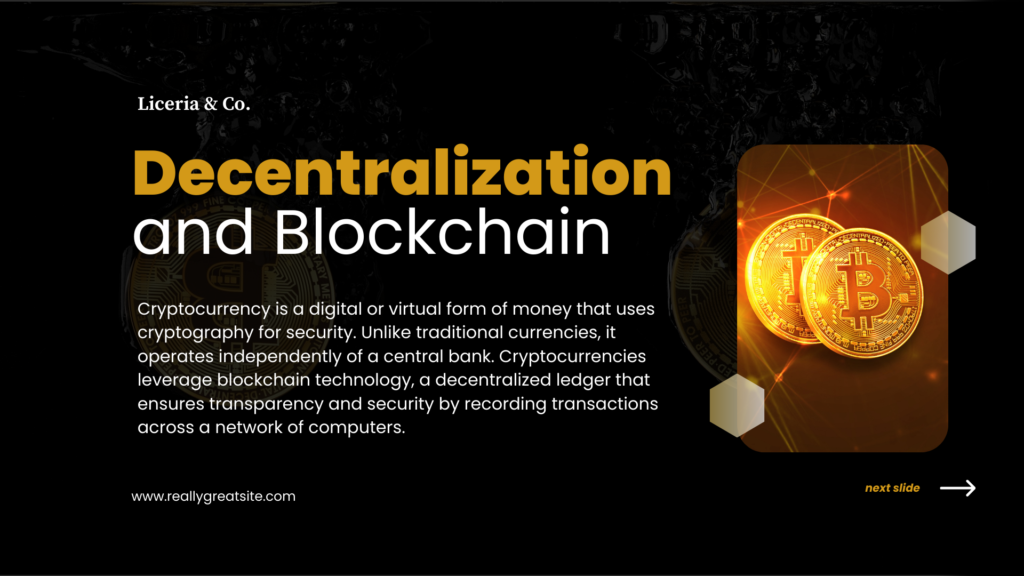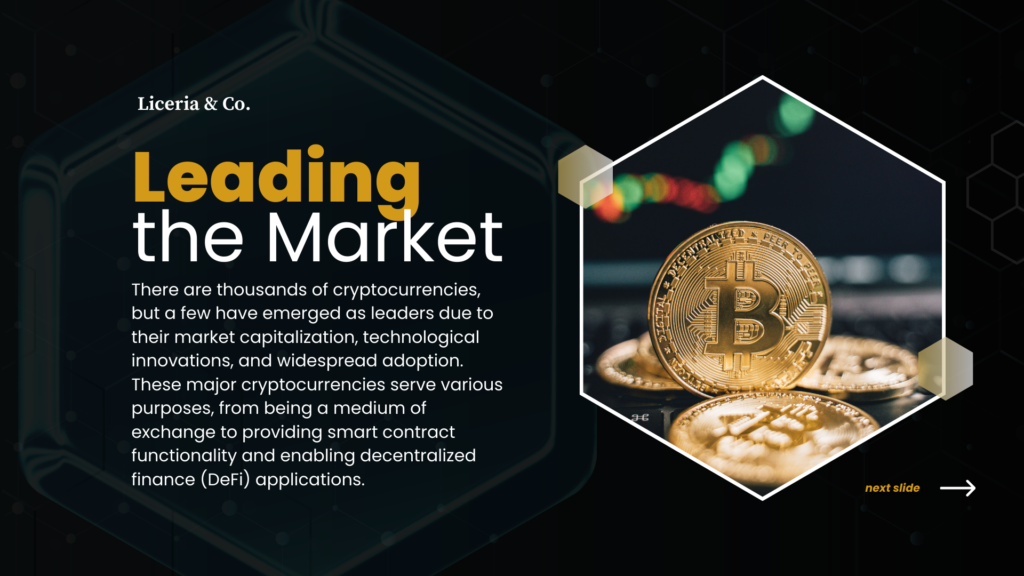Introduction
Cryptographic money has arisen as perhaps of the most problematic development in the realm of money. With computerized monetary forms like Bitcoin, Ethereum, and others acquiring far and wide consideration, they guarantee a progressive change by they way we see, make due, and use cash. Nonetheless, the excursion to turning into the eventual fate of money is cleared with open doors and difficulties. This article investigates the capability of digital money as the monetary arrangement of tomorrow, jumping into its advantages, challenges, and advancing reception patterns

1. The Rise of Cryptocurrency
Understanding the transient ascent of digital currency is fundamental for handle its expected effect.
Cryptographic money started with Bitcoin’s commencement in 2009 as a decentralized computerized cash. It presented blockchain innovation — a conveyed record guaranteeing straightforwardness, security, and permanence. This advancement stood out across ventures, prompting the improvement of thousands of cryptographic forms of money taking special care of assorted use cases.
Milestones in Cryptocurrency Evolution
- Bitcoin’s Emergence: Bitcoin made ready for decentralized finance, acquiring fame as “computerized gold.”
- The Advent of Altcoins: Cryptographic forms of money like Ethereum extended blockchain’s utilization past exchanges by empowering shrewd agreements.
- Institutional Adoption: Organizations like Tesla and MicroStrategy have begun holding digital currencies as a feature of their portfolios, legitimizing the pattern.
| Milestone | Significance |
|---|---|
| Bitcoin’s Launch | Introduced blockchain technology to the world. |
| Ethereum’s Smart Contracts | Enabled decentralized applications (DApps). |
| Institutional Interest | Boosted cryptocurrency’s mainstream credibility. |
2. Benefits of Cryptocurrency in Finance
Digital currency offers unrivaled benefits over customary monetary frameworks.

From lower exchange expenses to expanded openness, computerized monetary standards can possibly address existing shortcomings in worldwide money.
Key Advantages
- Decentralization: Digital currencies kill the requirement for middle people like banks, permitting direct exchanges.
- Lower Costs: Conventional financial frameworks charge strong expenses for global exchanges. Digital forms of money radically diminish these expenses.
- Financial Inclusion:In locales where banking framework is restricted, digital currencies give an entryway to monetary administrations.
| Benefit | Description |
|---|---|
| Decentralization | Transactions occur without intermediaries. |
| Accessibility | Provides banking solutions to the unbanked. |
| Lower Fees | Reduces transaction costs, especially cross-border. |
Applications in Finance
Digital currencies are as of now being utilized for settlements, shared loaning, and decentralized finance (DeFi) stages. Their capacity to empower ongoing, borderless exchanges positions them as a groundbreaking power.
3. Challenges Hindering Cryptocurrency Adoption
While the advantages are convincing, cryptographic forms of money face critical obstacles.

For cryptocurrencies to truly become the future of finance, several challenges need to be addressed, ranging from regulatory issues to environmental concerns.
Regulatory Uncertainty
States all over the planet are wrestling with how to manage digital currencies. While certain countries embrace them, others force severe limitations or inside and out boycotts.
Volatility
Digital currencies like Bitcoin and Ethereum frequently experience outrageous cost changes. This instability prevents standard reception, especially for everyday exchanges.
| Challenge | Impact |
|---|---|
| Regulatory Ambiguity | Limits institutional and consumer trust. |
| Price Volatility | Deters use as a stable medium of exchange. |
| Security Concerns | Vulnerabilities in exchanges raise risks. |
Environmental Impact
Mining digital forms of money requires enormous computational influence, adding to energy utilization and fossil fuel byproducts. Arrangements like verification of-stake systems plan to alleviate this issue, however the progress is continuous.
4. Cryptocurrency vs. Traditional Finance
Contrasting cryptographic money with customary monetary frameworks features its groundbreaking potential.

While customary money depends on unified establishments, digital currencies capability on decentralized networks, offering remarkable benefits yet in addition presenting novel difficulties.
| Feature | Cryptocurrency | Traditional Finance |
|---|---|---|
| Accessibility | Open to anyone with internet access. | Dependent on banking systems. |
| Transaction Speed | Near-instant transactions globally. | Can take days for international transfers. |
| Transparency | Blockchain records are publicly available. | Centralized and opaque. |
| Stability | Highly volatile. | Relatively stable. |
Progressing from conventional frameworks to digital money based money would require tremendous changes in foundation, attitude, and approaches.
5. The Future of Cryptocurrency
Hypothesizing about the eventual fate of cryptographic money opens up thrilling potential outcomes.
Cryptographic forms of money are not simply computerized monetary standards; they are a developing environment incorporating non-fungible tokens (NFTs), decentralized finance (DeFi), and blockchain-based arrangements.

Trends Shaping the Future
- Central Bank Digital Currencies (CBDCs): Governments worldwide are exploring digital currencies backed by central banks, blending cryptocurrency’s advantages with traditional oversight.
- Wider Institutional Adoption: Companies like PayPal and Visa integrating cryptocurrency signals growing acceptance.
- Technological Advancements: Layer 2 solutions like Lightning Network aim to address scalability and speed issues.
Mass Adoption Indicators
Mass reception will rely upon settling difficulties like adaptability and administrative consistence. Instruction missions to increment buyer understanding will likewise assume an essential part.
Notes on Cryptocurrency’s Role in Finance
- Emerging Use Cases: Past installments, digital currencies empower imaginative arrangements in regions like production network the executives and character check.
- Security First: For digital currencies to succeed, trade stages should focus on security and straightforwardness.
- Future Trends: Cross-line joining and associations among state run administrations and blockchain organizations are probably going to characterize the following period of development.
Comparison Table: Cryptocurrency vs. Fiat Money
| Feature | Cryptocurrency | Fiat Money |
|---|---|---|
| Physical Presence | Digital only. | Physical and digital forms. |
| Issuance | Decentralized, peer-driven. | Centralized by governments. |
| Supply Control | Algorithmic (e.g., Bitcoin’s 21M cap). | Controlled by central banks. |
| Transaction Speed | Near-instant. | Delayed for international transfers. |
| Environmental Impact | High (currently). | Moderate. |
Conclusion
Digital currency addresses a striking move toward the eventual fate of money, testing customary frameworks and presenting a decentralized, straightforward, and comprehensive other option. While its benefits are evident, obstacles like guideline, unpredictability, and ecological worries should be addressed for it to accomplish its maximum capacity.
As blockchain innovation progresses and worldwide mentalities shift, the monetary scene could observer a worldview change, with cryptographic money assuming a focal part. Whether it turns into a definitive monetary arrangement or stays a correlative resource class will rely on how society explores its intricacies. One thing is sure: digital currency is reshaping how we might interpret cash, making ready for an imaginative and interconnected future.


